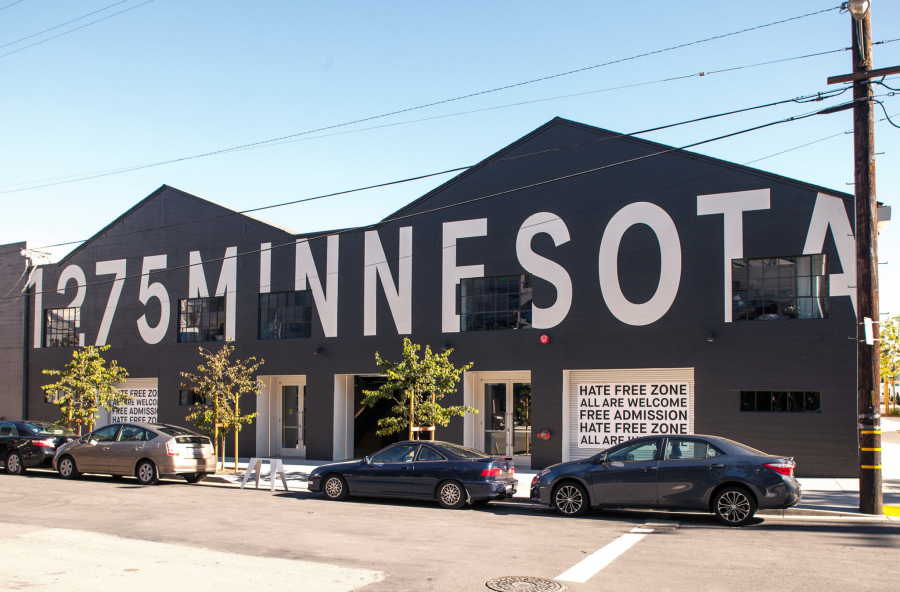Dogpatch, San Francisco: A Hub for the Creative
by Julie Lasky
At the end of the day, when Dennis Herrera is done with projects like suing the developers of San Francisco’s notoriously sinking Millennium Tower, he goes home to his solidly built house near the bay. Mr. Herrera, 54, has been San Francisco’s city attorney since 2001. He has lived in Dogpatch, a waterfront enclave on the eastern side of the city, even longer.
As Mr. Herrera recently recounted, when he began house hunting in 1993, Dogpatch didn’t always lay claim to that name. His eye fell on a newspaper listing for an 1884 Italianate Victorian that was said to be in Potrero Hill. Intrigued by the surprisingly reasonable price of $250,000, he discovered that the property was actually in an industrial area directly east of its putative neighborhood, on Tennessee Street near a Hell’s Angels clubhouse.
“It was really gritty,” Mr. Herrera said. But still, he was charmed. He paid $235,000 for the 2,900-square-foot building. As new construction began to fill surrounding vacant lots, and the ample street parking disappeared, he added a two-car garage. Today, he lives in the house with his wife, Anne, and their 15-year-old son, Declan. The Hell’s Angels remain neighbors.
In the last five years or so, Dogpatch has lost many of its rough edges and become a hub for creative industries, from brewing to branding. David Fletcher, a landscape architect, helped create several new green spaces in the neighborhood, including its first playground, and works in the American Industrial Center, a former cannery that stretches along Third Street, from 20th to 23rd Streets. He described the complex as “an aircraft carrier of creativity.” Fellow tenants include a chocolate maker, a roboticist, a bookbinder, a sex-toy inventor, a messenger-bag manufacturer and an organizer of cooking parties. “It’s pretty amazing one-stop shopping,” he said.
The arts also bloom in Dogpatch. The Minnesota Street Project, a three-building complex between 23rd and 24th Streets that includes 35,000 square feet of gallery space and 22,000 square feet of subsidized studio space, opened in spring as a refuge for artists who have been priced out of gentrifying neighborhoods like the Tenderloin. Three years ago, theMuseum of Craft and Design moved to its current location in the American Industrial Center from the Union Square area. Next month, Untitled, an international art fair, will hold its first San Francisco event at Pier 70, a 65-acre former ironworks and shipbuilding site.
However, as Veronica Nye, the bar manager of the Dogpatch Saloon, at 2496 Third Street, pointed out, most of the neighborhood’s growth has been in housing, not services. “It would be nice if it were the other way around,” she said. Dogpatch still lacks a bank branch and a grocery store. Many residents do their main shopping in nearby Potrero Hill and pick up things like hummus and cheese at Reno’s Liquor Store, at 728 22nd Street.
Among other concerns is the impact of a Golden State Warriors basketball arena planned for Mission Bay to the north. While some appreciate the promise of new business, others worry about rowdy fans and traffic. Opinion is also divided about the city’s proposal to locate a homeless navigation center — a facility that offers shelter and services — in Dogpatch. The community voted to support a temporary center on 25th Street at San Francisco Bay.
What You’ll Find
As generously defined by Bruce Kin Huie, the president of the Dogpatch Neighborhood Association, the district is bounded by Mariposa Street to the north, Cesar Chavez Street to the south, the waterfront to the east and Pennsylvania Avenue and Indiana Street to the west.
Housing includes Victorian homes and workers’ cottages that survived the 1906 earthquake, but these rarely come on the market. Buyers will find more inventory in repurposed midcentury factories and new condominium and rental buildings, which are proliferating at an explosive rate. Mr. Huie confirmed that the neighborhood’s stock of almost 2,000 residential units is expected to double by the end of 2017, with the addition of new condo and apartment buildings. A proposed future development at Pier 70 will add up to 2,150 rental apartments, 30 percent of which will be priced below market rate.
The Vibe
Dogpatch is a tightly knit community of passionate citizens. While residents are concerned about the sudden spike in density, they take refuge in organizations like the Dogpatch Neighborhood Association, which has a design and development review committee that seeks to ensure that new developments don’t get too big, bland and homogeneous. Dogpatch, along with a section of Potrero Hill, also recently established the first Green Benefit District in California, a community-supported initiative to improve and expand public green space.
The Commute
Dogpatch is convenient to two stops on the T-Line Muni Metro light rail system running on Third Street, one at 20th Street and another at 23rd Street, with service to downtown. (The trip to Powell Street station takes about half an hour.) It is also served by the 22nd Street Caltrain commuter rail station for travel to Silicon Valley and other points south.
The History
The origin of the name Dogpatch is uncertain, but Christopher VerPlanck, an architectural historian in San Francisco, believes that it dates to the Depression, when the neighborhood, which was then known as Lower Potrero, became populated by people who had migrated to San Francisco from hard-hit parts of the United States to work in the shipyards. “This was during the time that Li’l Abner was a popular comic strip,” he said, “and consequently, in many Southern towns, the area where the poor white people lived was called ‘Dogpatch,’ ” Mr. VerPlanck wrote in an email. “I think many San Franciscans saw the Lower Potrero area as a working-class white Southern enclave and called it Dogpatch.” Others theorize that the area received its name from wild dogs that roamed the neighborhood.
